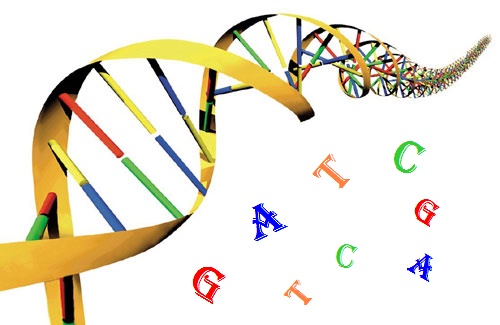BIOINFORMATICS SERVICES
We offer bioinformatics services focused on software-based analysis of genomic data.
Our response time is short. We cope with the full range of bioinformatics job complexities. From simple over-night jobs through complicated tasks requiring a dedicated computational pipelines and even tasks which are not yet well-defined.
Computational process is carefully documented. End results are delivered in a methodical clear report, accompanied by graphs and heat-maps as required for the task. Service is offered at a cost-effective price and payment terms are flexible.

ABOUT
Bioinformatics-services is an enterprise led by Jonathan Monin, M.Sc. Physics, B.Sc. Mathematics, MBA and extensive experience in leading multi-disciplinary technological and scientific projects.
Expertise drawn from hands-on university and medical research projects and Bioinformatics algorithms courses.
Programming infrastructure - both Linux and Windows, R statistical environment, Python and C as required for optimizing memory and CPU time.
OUR ADVANTAGES
- Short response time. Standard tasks may be accomplished overnight.
- Flexible solutions for unique tasks by combining tailored code programming.
- Cost effective pricing. An attractive introductory offer for any first project.
- Serving both one-time short projects or long-term continuous projects.
- Determine your level of involvement: Daily reviews? Just a final report?
Send your files today!
CONTACT US
PROJECT EXAMPLES
Variant calling and analysis of somatic mutations
Analysis launched on a set of NGS FASTQ files and included data filtering and trimming, read merging, overlap type of alignment, variants SNP detection and counting, characterization in hotspot and regional domains, creation of lineage trees and quantification of mutation rates. Use of IGMT database and UCSC genome browser.
RNA-Seq analysis
Clustering analysis evaluates replicate repeatability, identifies distinct phenotypes, treatments, or time-point characteristics, and detects outliers. Utilizing PCA plots, we provide an initial indication of the quality and accuracy of RNA-Seq preparation.
Focusing on differentially expressed genes (DEG), we deliver a sorted list of genes characterized by statistical significance, fold-change, and other critical parameters. The list of genes can target differences between treated and wild-type or across seevral time points.
To help interpret complex data sets, we perform pathway analysis to reveal the biological significance behind the raw DEG lists. (1) Gene Set Enrichment Analysis (GSEA): Identify significant biological pathways and processes that are enriched in your gene list. (2) Over-Representation Analysis (ORA): Determine which pathways or functional categories are over-represented in your differentially expressed genes.
Single Cell analysis
Unraveling cell types and sub-populations within your tissue sample. Comparative studies between normal and treated/diseased tissues, revealing expression levels, cell counts, and differentially expressed genes across clusters and phenotypes. Tracking sub-population changes over multiple time points, such as 1 hour, 24 hours, and one week after treatment, to understand temporal cellular dynamics, responses and adaptations. Insights into trajectory analysis, cell-cell communication networks and ligand-receptor interactions.
Micro-Array Analysis - Differential gene expression and molecular pathways
Input data in the form of CEL files resulting from probe-based micro-arrays. Noise reduction and normalization to obtain differential expressions across all genes. Performing both gene ontology (GO) enrichment analysis and mapping against Kyoto's KEGG database. Establishing timeline expression heatmaps across samples. An RNAseq computational pipeline is set for projects requiring deeper resolutions at the exon and isoform levels.
Investigating methylation patterns and markers
Several different epigenomic-related projects: starting from methylation array data (e.g. HumanMethylation450 beadchip array or bisulfite sequencing files) and identifying unique pattern and regional characteristics accompanied by phenotype correlation against control or databases (e.g. TCGA database - Cancer Genome Atlas) all for different medical research projects.
Applying diverse sequence alignments procedures for varying tasks
Reference-based global, local and overlap alignments, whole-genome short-read alignments, bisulfite sequencing alignment (agnostic to CpG sites), RNAseq alignments (cross exon-junctions) and BLAST tools. Exploring parametric effects on alignment outcomes.
- EMAIL: info@bioinformatics-services.co.il
- TEL: +972-54-5698910
- ADDRESS: Sahlav 20, Nes Ziyyona 7420250, Israel
- MOBILE SITE: bioinformatics-services.co.il/mobile-home.htm
- © 2014- bioinformatics-services.co.il